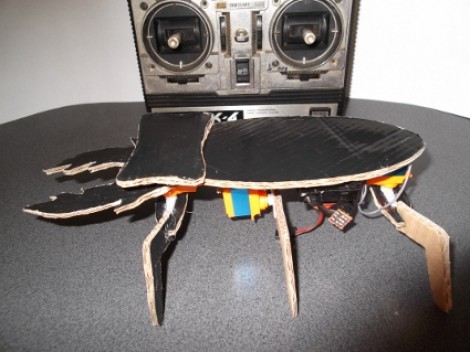Batteries have come a long way in the past few centuries, but pale in comparison to hydrocarbon fuels when it comes to energy density. When it comes to packing plenty of juice in a light, compact package, hydrocarbons are the way to go. Recently, researchers have begun to take advantage of this, powering small robots with liquid fuels. Just like Bending Unit 22, aka Bender Bending Rodriguez, this tiny robotic beetle runs on alcohol.

Affectionately named Robeetle, the tiny ‘bot weighs just 88 milligrams, comparable in mass its insectoid contemporaries. It stores methanol in a polyimide film tank, operating for up to 2 hours on a single fill. As shown in the video, a solely mechanical control system is used to actuate the robot’s legs. In the neutral state, vents in the fuel tank are open, releasing methanol vapor. This passes over nitinol muscle wires coated in a special catalyst which causes the combustion of the methanol, heating the wires. The wires then contract, moving the legs, and closing the vents. When the wire cools, the wires relax, opening the vents and beginning the cycle anew.
While the ‘bot is solely capable of walking in a single direction, it nevertheless shows the possibilities enabled by powering small devices from energy-dense fuels. Waiting for improved battery technologies to develop is such a bore, after all. We look forward to swarms of such ‘bots exploring disaster areas or performing environmental sampling in years to come. The scientific paper outlines the research outcomes in detail.
We love tiny robots at Hackaday; we’ve featured a few in the past, too. Video after the break.


















